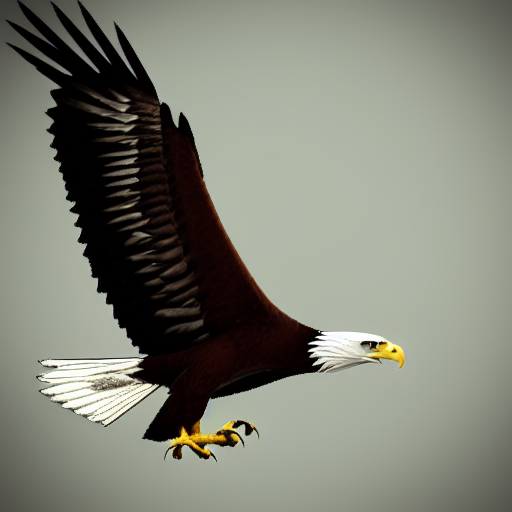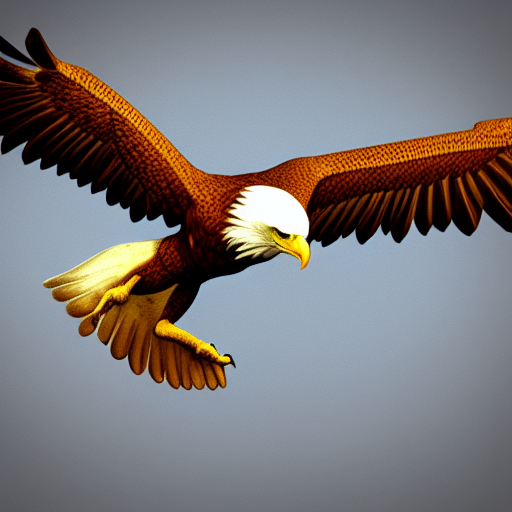“It’s a bird…it’s a plane…it’s superma-“
Oh, no wait, it is a bird!
Do you want to know how fast an eagle can fly?
Fun fact for you, eagles are some of the fastest animals on the planet and can reach speeds of up to 100 miles per hour.
Let’s take a closer look at how fast eagles fly and why they are so fast!

The average speed of an eagle in flight is about 30 miles per hour, but they have been clocked flying as fast as 100 miles per hour.
Eagles use thermals (rising columns of warm air) to stay in the air for long periods of time without having to flap their wings, which allows them to conserve energy.
How fast can an eagle fly and how do they fly so fast
An eagle’s top speed depends on its size and species.
The smallest eagles, like the booted eagle, can reach speeds of up to 40 mph. The largest eagles, like the wedge-tailed eagle, can reach speeds of up to 80 mph.
But why are eagles so fast?
One reason is that they have large wingspans. The larger the wingspan, the more lift an eagle has. This allows them to soar to great heights and then dive at high speeds. Another reason is that they have powerful breast muscles.
These muscles give them the strength they need to flap their wings powerfully and quickly. As a result, eagles are able to fly faster than most other birds.
What are the factors affecting the eagle’s speed in flying
There are many factors that affect the speed of an eagle in flight.
- The most important factor is the wind. If there is a strong wind, the eagle will have to use more energy to fly.
- Another important factor is the temperature.
- If it is cold, the eagle will have to use more energy to stay warm.
- The weight of the eagle also affects its speed.
- A heavier eagle will have to use more energy to fly than a lighter one.
- Finally, the eagle’s wingspan also affects its speed.
- A shorter wingspan means that the eagle has to flap its wings more often, which uses more energy.
How does an eagle’s flying speed compare to other animals?

Eagles are among the fastest flying birds, capable of reaching speeds of up to 150 miles per hour. But they are not the only animals that can reach high speeds in the air.
- The fastest flying insects, such as the dragonfly, can reach speeds of up to 35 miles per hour.
- Birds of prey such as the peregrine falcon can dive at speeds of up to 200 miles per hour.
- Some bats have been recorded flying at speeds of up to 60 miles per hour.
- In comparison, the world’s fastest land animal, the cheetah, can reach speeds of up to 75 miles per hour.
So while eagles may not be the fastest flyers in the animal kingdom, they are still among the quickest creatures in the sky.
So next time you see an eagle soaring through the sky, remember that it’s not just riding on the wind – it’s moving pretty fast on its own power as well.
What species of eagle is the fastest

The fastest species of eagle is the Peregrine falcon.
They can reach speeds of up to 198mph when diving for prey. The second fastest species is the Golden eagle, which can reach speeds of up to 173mph.
The third fastest species is the White-tailed eagle, which can reach speeds of up to 149mph.
All three species are found in North America. The Peregrine falcon is the most common and can be found in every state except Hawaii.
The Golden eagle is less common and can be found in western states such as Alaska, California, and Colorado. The White-tailed eagle is the least common and can be found in eastern states such as Maine and Florida.
All three species are protected under the Bald and Golden Eagle Protection Act.
What are some of the benefits of eagles being able to fly so fast?

One of the benefits of eagles being able to fly so fast is that they can cover a lot of ground in a short amount of time.
This is especially beneficial when they are hunting for food.
Eagles can spot their prey from far away and then quickly swoop down and catch it.
Another benefit of eagles being able to fly so fast is that they can easily escape predators. If an eagle is being chased by another animal, it can simply fly away to safety.
Flying fast allows eagles to reach high altitudes where they can take advantage of thermal currents and glide for long periods of time without flapping their wings.
This saves them a lot of energy and allows them to soar for hours on end.
As you can see, there are many benefits to eagles being able to fly so fast.
How do eagles use thermals to stay in the air for long periods of time?
Eagles are masters of the skies, able to soar for hours on end with little effort.
Their secret lies in their ability to take advantage of thermals – pockets of rising air created by the sun heating up the ground.
By riding these currents of warm air, eagles can attain remarkable heights with very little flapping of their wings.
In fact, eagles will often circle around a thermal until they reach their peak, at which point they can glide for miles without having to flap their wings at all.
When thermals are not available, eagles will use updrafts created by the wind blowing over mountains or cliffs.
By understanding and utilizing these natural forces, eagles can stay in the air for hours at a time, giving them a bird’s eye view of their kingdom.
Article Sources
Jacks of Science sources the most authoritative, trustworthy, and highly recognized institutions for our article research. Learn more about our Editorial Teams process and diligence in verifying the accuracy of every article we publish.
